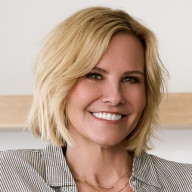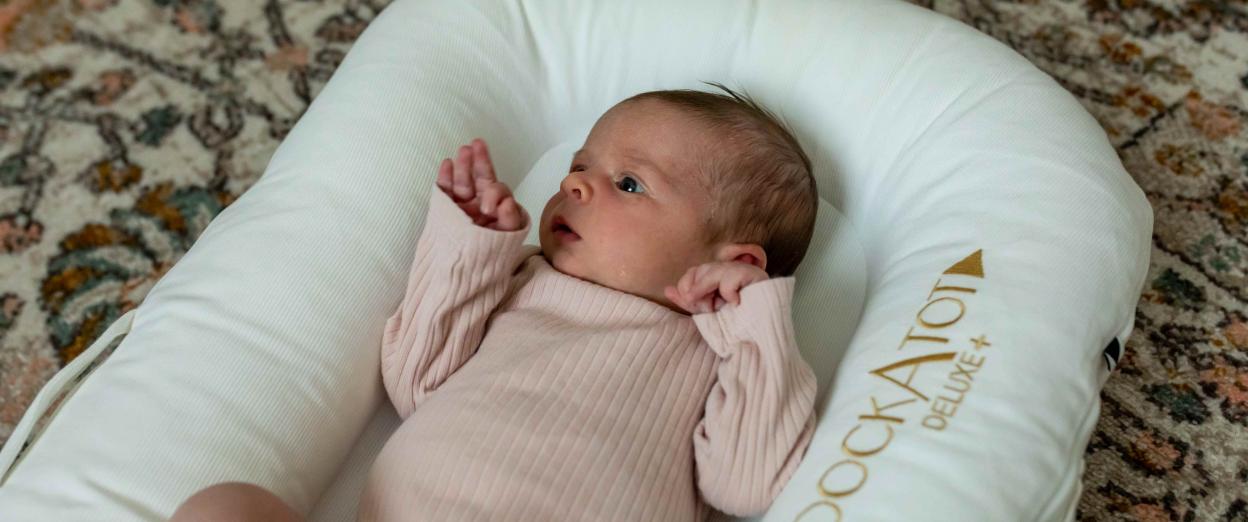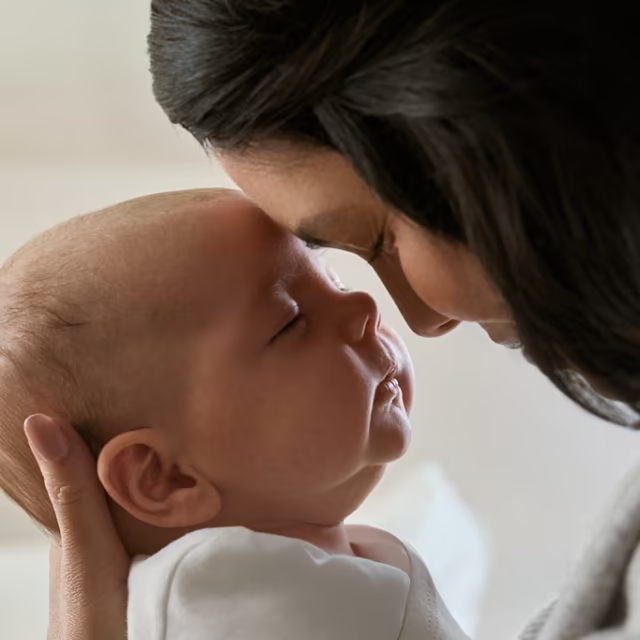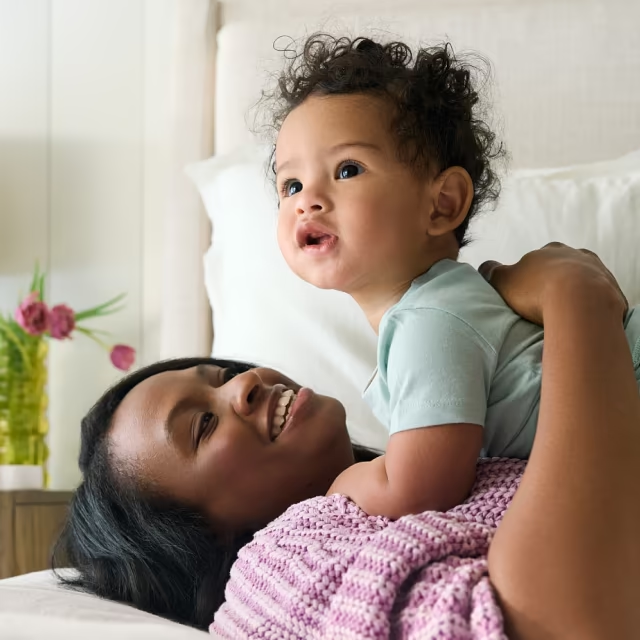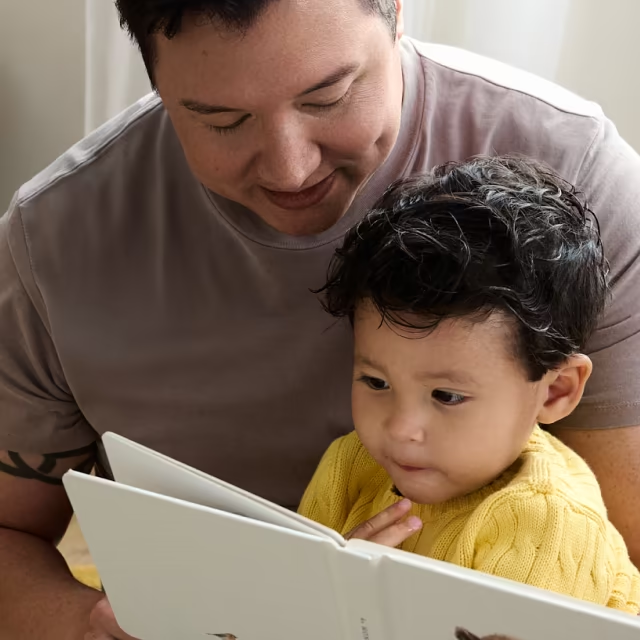Let’s talk about baby loungers and how to use them safely.
What is a baby lounger?anchor
A baby lounger is a portable, cushioned space for a baby. A baby lounger is also commonly called an infant lounger, baby lounger pillow, baby nest, or newborn lounger. Some well-known brands are DockATot, Snuggle Me, Boppy, and Rahoo.
Are baby loungers safe for sleep? anchor
No, baby loungers are not safe for sleep. According to the US Consumer Product Safety Commission (1), only products labeled with the words "crib," "bassinet," "play yard," or “portable crib” should be used for sleep. This means that anything labeled as a lounger, napper, infant seat, or sleeper is NOT approved for safe baby sleep. The American Academy of Pediatrics (2) states, “Infants are at risk of suffocating if their noses or mouths become blocked [by the cushioned sides], or if they roll off of these products.”
What are the guidelines for baby loungers?anchor
When using a baby lounger:
Use loungers only during awake time, and never for sleep.
Be sure you are supervising your baby.
Place the lounger on the ground to avoid any potential falls.
Follow all manufacturer instructions and guidelines.
Note: Please note that even if your lounger has straps or attachments that look like you can leave your baby unattended, babies should always be supervised when in a lounger.
What is the safest place for a baby to sleep? anchor
The American Academy of Pediatrics’ (3) official safe sleep guidelines say that infants should always be placed on their backs for sleep on a separate, “firm, flat, noninclined” surface without any bumpers, loose bedding, soft/weighted objects, or positional devices. Only products labeled as a “crib,” “bassinet,” “portable crib,” “play yard” should be used for baby sleep. For more information on setting up a safe sleep space for your baby, I have a Safe Sleep Checklist for you.
How can I help my baby sleep without using a baby lounger?anchor
Here are my tips for helping your baby learn to sleep in a safe sleep space instead of a baby lounger:
Check the sleep environment.
We want the room to be safe, dark, and cool. We also want the consistent hum of a sound machine during sleep. This creates a comfortable space free of distractions, making it easier to fall asleep and stay asleep.Set your baby up for sleep success.
We can do this by following age-appropriate wake windows and being mindful of sleepy cues. A baby who isn’t quite ready for sleep or who is overtired often struggles to fall asleep and stay asleep. Finding that balance can help make sleeping in the bassinet or crib easier.Establish a bedtime routine.
A bedtime routine is a great way to cue your baby's brain that sleep is coming. Even before your baby begins to recognize the routine, the calming effects can be helpful in preparing for sleep. Bedtime routines don't have to be complicated. They can be as simple as feeding, diaper change, pajamas, swaddle, lullaby, and placing your baby in the crib.Consider swaddling.
Swaddling your newborn baby with their arms in and snug can replicate that cozy feeling your baby gets while in your arms or in a lounger. It can also calm the Moro reflex that can startle them awake. Swaddling can be a helpful tool even with babies who seem to hate the swaddle.(2)
The b.e.s.t. swaddle by Taking Cara Babies is designed to give your baby that womb-like comfort. It even comes with a free mini class to help your little one love the swaddle.
Safety Tip: When your baby shows signs of rolling, it’s time to transition out of the swaddle.
Have a plan.
If you have followed all the steps above and sleeping outside of a lounger still feels impossible, my classes can help. I’ll teach you everything you need to help your baby fall asleep independently and work towards longer stretches of sleep at night all while in a safe-sleep environment. All of my classes meet your little one right where they are developmentally and will provide you with strategies to meet your family’s priorities and lifestyle.
References
4 Sources
United States Consumer Product Safety Commission (2025). Safe Sleep – Cribs and Infant Products
American Academy of Pediatrics (2023). Inclined Sleepers, Soft Nursing Pillows, & Other Baby Products to Avoid
American Academy of Pediatrics. (2022). Sleep-Related Infant Deaths: Updated 2022 Recommendations for Reducing Infant Deaths in the Sleep Environment
Dixley and Ball. (2022). The effect of swaddling on infant sleep and arousal: A systematic review and narrative synthesis
Keep in mind that the information and content on this blog is for informational purposes and should not be considered medical advice. If you have questions about your child, please reach out to your doctor.
